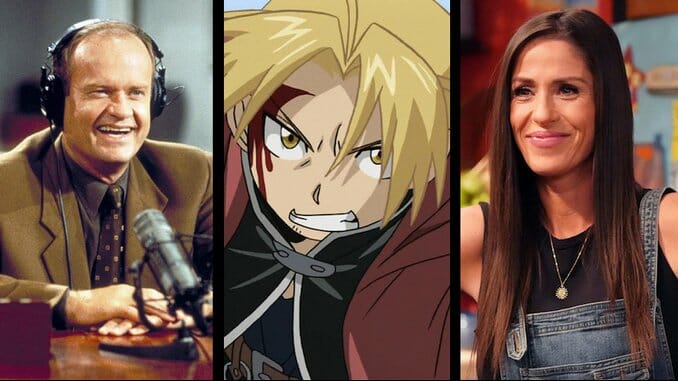Why the Recent Wave of TV Reboots Is Nothing New to Anime Fans

The last few years have seen a wealth of TV reboots and revivals—series once thought dead getting a second chance at life and legacy. After a former final season featured a change in creative control, Gilmore Girls: A Year In The Life saw the original showrunner returning to her old whimsical stomping grounds. After an abrupt cancellation that left fans dumbfounded, Deadwood: The Movie offered you the chance to say goodbye to the residents of the foul-mouthed titular South Dakota town. After blurring the line for years between “ridiculously popular and foundational science-fiction show” and “cult classic,” two more seasons of The X-Files let us in on how Mulder and Scully were weathering the 2010s (Not particularly well.) And there are so, so many more planned (Frasier, Dexter, Rugrats….)
Some of these revivals have amounted to little more than comfort food, consoling nostalgic audiences that the fictional people they cherished turned out okay in the end. Others seem like grand experiments in taking storylines and characters that seem so deeply rooted in the era of their conception, and seeing how they survive the trials of modern television. But regardless, they are nothing new, especially to anime fans, whose entertainment diet often revolves around a parade of reboots.
The last decade has also seen a wealth of anime remakes and returns, some attempting the same things that these live-action TV shows are, and some produced for a different reason. In the former category, we have shows like Digimon Adventure Tri and Dragon Ball Super, revisiting the worlds and colorful casts you may have loved as a kid that now serve almost like an annual medical check-up. Haven’t seen ya in a while? How’s your blood pressure, Goku? Take some vitamins, and I’ll see you in the sequel.
But others attempt to solve a more complicated predicament—like not overlapping the source material, which is a more common situation than you think. One of the strengths (and sometimes a weakness) of manga is that it tends to be the work of a single person’s creative process. They might have assistants and editors helping them out, but the consistency of the series rides heavily on the manga author’s output. If they decide to take a break, the story stops. Meanwhile, if the series is being adapted by an animation studio and they are eager to pump out episode after episode on a weekly basis, they run the risk of lapping the original.
Some handle this by adding filler, storylines that are inconsequential to the overall narrative that will kill time until everyone feels comfortable moving forward. Others, like Fullmetal Alchemist and Hunter x Hunter, took a different approach. In the case of the first, the manga’s author Hiromu Arakawa asked that a new ending be devised so that she could work on her story at her own pace without feeling hamstrung about whatever the anime was doing. Thus, the plot of 2003’s Fullmetal Alchemist switches gears halfway through, providing an adaptation and then an alternative. 1999’s Hunter x Hunter, on the other hand, reached the last bits of source material left and just ended, with the studio later providing three OVAs’ (original video animations that mostly serve as home video products) worth of stories to try and wrap things up to an extent.